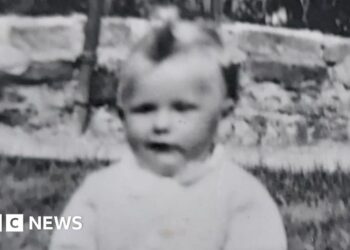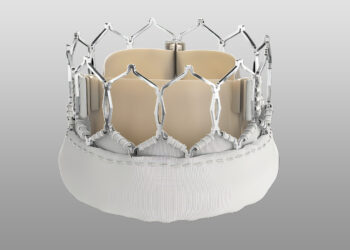[ad_1]
Is your infant patient having seizures because they rolled off a bed? Or are the seizures a sign of neurologic head trauma after being hit or shaken by a parent? Pediatricians and other clinicians grapple with these questions, but new guidance may aid in determining the difference.
A new technical report from the American Academy of Pediatrics (AAP) on abusive head trauma (AHT), previously known as shaken baby syndrome, outlines indicators of harm that could be missed in a pediatrician’s office. The document also includes evidence-based prevention strategies, common outcomes, management, and treatment of AHT.

“Things like vomiting without diarrhea, rapid increase in head circumference, and seizures are things that may present to a primary care provider, and they need to be aware that AHT should be considered so as to not miss something,” said Antoinette Laskey, MD, MPH, MBA, division chief of the Center for Safe and Healthy Families at Primary Children’s Hospital in Salt Lake City, chair of the AAP Council on Child Abuse and Neglect, and an author of the report.
Defined as an injury to the skull or intracranial content of an infant or child younger than 5 years, AHT is the third leading cause of head injury in children. The majority of serious head trauma cases in the first year of life are the result of abuse, according to the US Centers for Disease Control and Prevention.
AHT is considered one of the most challenging diagnoses in the field of child abuse and neglect, said Stephanie Deutsch, MD, medical director of the Nemours CARE (Children at Risk Evaluation) Program at Nemours Children’s Health in Wilmington, Delaware, who was not involved with the report.

Patients with AHT frequently have “symptoms that overlap with many other medical conditions, and evaluating clinicians must decide when ordering neuroimaging or other diagnostic testing is appropriate,” Deutsch said. Diagnosis can be complicated in children who are not able to recount what happened to them, as AHT rates peak around 2 and 8 months of age and drop after a child turns 1. Incidences are rare in children older than 5 years.
Additionally, caregivers may not be forthcoming about how an injury occurred, or a child may lack obvious external indicators of abuse. The emotional impact of treating an abused child or reporting caregivers to authorities can also weigh on pediatricians, Deutsch said.
Signs of Abuse
The report goes into detail about the wide-ranging symptomology and evaluation processes for AHT.
Fussiness, difficulty staying awake, and feeding issues can signal AHT in infants and toddlers. But these behaviors can also be caused by viral illness, accidental trauma, or infection, Deutsch said.
In these cases, head trauma is not recognized “until the infant deteriorates and requires a higher level of care or there are other symptoms that would then point to trauma.”
Clinicians should conduct a full-body, thorough examination of children and infants presenting with AHT symptoms, looking for other features that may indicate abuse such as bruising in unusual locations and intraoral injuries, Deutsch said.
Clinicians can also look for nonphysical signs of potential harm outlined in the report, which might include an absent or changing caregiver story about what happened to the child or a delay in seeking care for the injury. Or a caregiver may cite a cause of injury that does not align with the developmental phase of a child, such as a baby rolling off a bed when it does not have the motor skills to do so.
These red flags have varying degrees of evidence supporting them, with an absent or inconsistent story being the most well-backed, according to the report. Literature supporting developmental inconsistencies as predictors of AHT was more limited, while evidence for a delay in seeking care was mixed.
Prevention Strategies
Caregiver education is a core part of preventive care, according to the report.
“Parents see pediatricians as a trusted source of information about what is normal and how to deal with challenges of parenting,” Laskey said.
Clinicians can use preventive strategies such as the Period of Purple Crying program, which teaches parents about the dangers of AHT and violently shaking a baby, the normalcy of infant crying, and techniques for caregivers to manage their frustration.
Mixed evidence indicates that these strategies increase caregiver awareness about AHT and instances of walking away when agitated.
But pediatricians can also deliver this education informally, Deutsch said.
Laskey said clinicians help prevent incidences by educating parents on the normalcy of exasperated feelings when a baby will not stop crying. Caregivers can also work on a plan to remove themselves from a child before reaching a breaking point, Laskey said.
“Take the opportunity frequently in the early visits for well-child checks to ask caregivers, ‘How are you doing? Do you have someone who can help when it feels overwhelming? Has your baby started their crying phase yet? Tell me about that,’” Laskey said.
Methods to reduce infant crying, such as nurse home visits, swaddling, and acupuncture, have limited research supporting efficacy.
Brittany Vargas is a medicine, mental health, and wellness journalist.
[ad_2]
Source link : https://www.medscape.com/viewarticle/did-they-fall-or-were-they-hit-diagnosing-abusive-head-2025a100053o?src=rss
Author :
Publish date : 2025-02-28 08:30:22
Copyright for syndicated content belongs to the linked Source.














